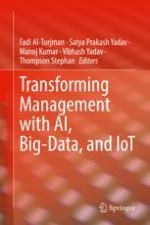2022 | OriginalPaper | Buchkapitel
Malware Discernment Using Machine Learning
verfasst von : Vivek Srivastava, Rohit Sharma
Erschienen in: Transforming Management with AI, Big-Data, and IoT
Aktivieren Sie unsere intelligente Suche, um passende Fachinhalte oder Patente zu finden.
Wählen Sie Textabschnitte aus um mit Künstlicher Intelligenz passenden Patente zu finden. powered by
Markieren Sie Textabschnitte, um KI-gestützt weitere passende Inhalte zu finden. powered by
